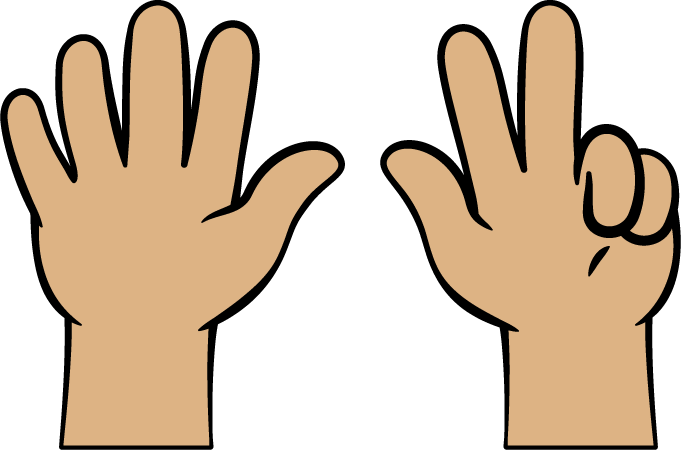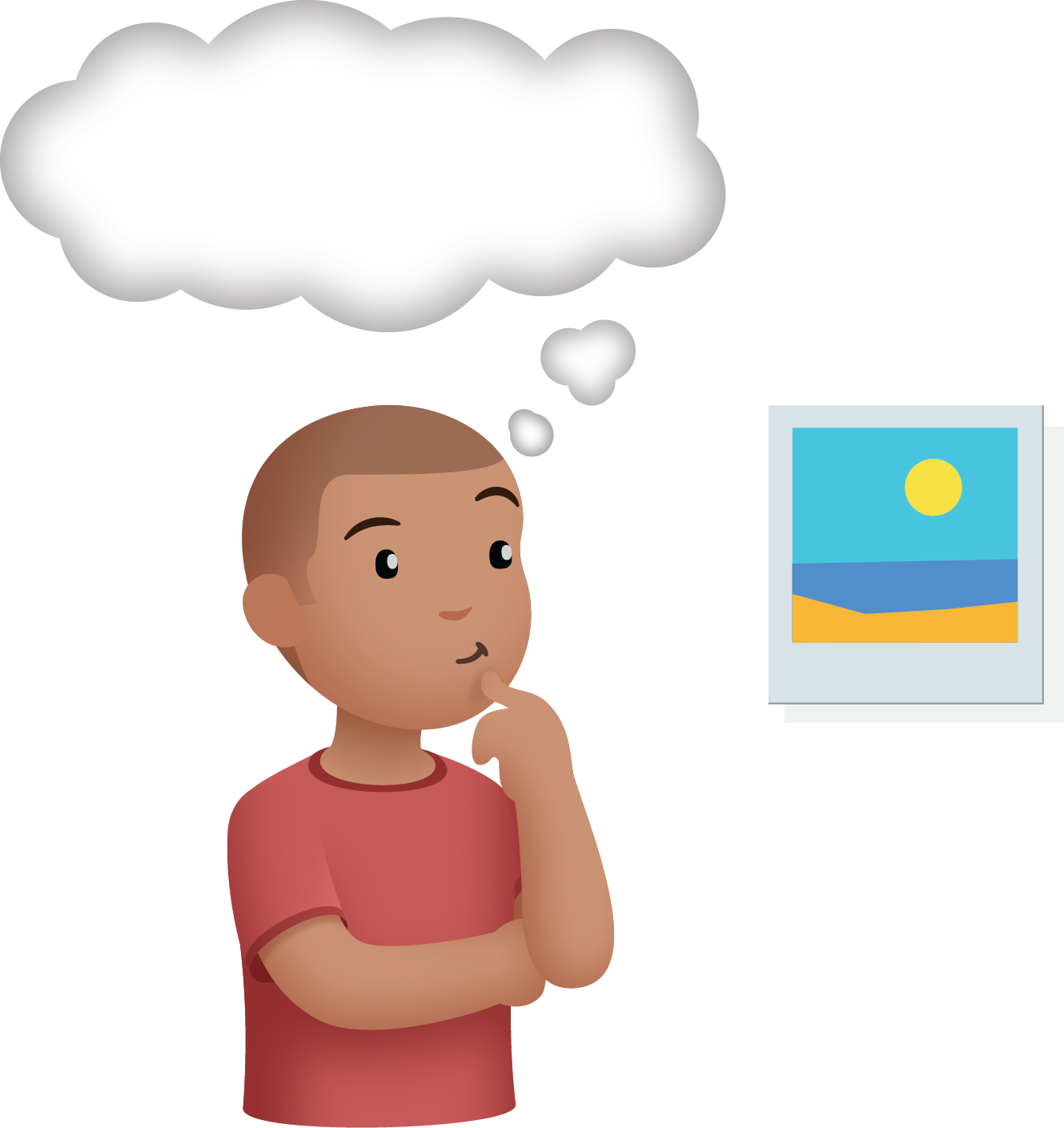Lesson 3
Count to Add and Subtract
Warm-up: Choral Count: Forward and Backward (10 minutes)
Narrative
Launch
- “Let’s count to 20.”
- Record as students count.
- “This time, instead of starting a 1 and counting forward, we are going to start at 10 and count backward until we get to 1. Let’s start at 10 and count backward to 1.”
Activity
- Repeat 3–4 times.
- “Let’s start at 20 and count backward to 1.”
- Repeat 2–3 times.
Student Response
For access, consult one of our IM Certified Partners.
Activity Synthesis
- “In today’s lesson we will solve story problems where counting forward and backward may help you.”
Activity 1: Ride the Bus (10 minutes)
Narrative
The purpose of this activity is for students to use their knowledge of the count sequence to solve Add To, Result Unknown and Take From, Result Unknown story problems where one is added or taken away.
Advances: Speaking, Representing
Required Materials
Materials to Gather
Launch
- Groups of 2
- Give students access to connecting cubes and 10-frames.
- “Today you are going to solve two story problems about people on a bus.”
Activity
- Read the first story problem.
- “Tell your partner what happened in the story.”
- 30 seconds: quiet think time
- 1 minute: partner discussion
- Monitor for students who accurately retell the story. Choose at least one student to share with the class.
- Reread the task statement.
- “Show your thinking using drawings, numbers, words, or objects.”
- 2 minutes: quiet work time
- 2 minutes: partner discussion
- Repeat the steps with the second story problem.
- Monitor for a student who can explain how they just knew the answer without making a representation.
Student Facing
-
There were 7 people on the bus.
Then 1 more person got on the bus.
How many people are on the bus now?Show your thinking using objects, drawings, numbers, or words.
_______________
-
There were 10 people on the bus.
Then 1 person got off the bus.
How many people are on the bus now?Show your thinking using objects, drawings, numbers, or words.
_______________
Student Response
For access, consult one of our IM Certified Partners.
Activity Synthesis
- Invite a previously identified student to share how they solved the second story problem.
Activity 2: Singing Students (15 minutes)
Narrative
The purpose of this activity is for students to complete and solve numberless Add To, Result Unknown and Take From, Result Unknown story problems. The story problems are about adding and subtracting 1, but they do not give a starting number and therefore highlight that adding 1 to any number gives the next number in the count sequence while subtracting 1 from any number gives the previous number in the count sequence. While the kindergarten standards only ask students to solve story problems with a result of up to 10, students may choose larger numbers for their problems.
Students may benefit from having the story problems in this activity read aloud multiple times.
Supports accessibility for: Conceptual Processing, Organization
Required Materials
Materials to Gather
Launch
- Give students access to connecting cubes and 10-frames.
- “Some students were singing. Then 1 more student came to sing with them. How many students are singing now?”
- “What do you notice? What do you wonder?” (Students were singing. Another student came to sing. How many students were singing? How many students are singing now?)
- 30 seconds: quiet think time
- 1 minute: partner discussion
- Share and record responses.
Activity
- “The story problem is missing the first number. Fill in a number and tell the story problem to your partner. Show your thinking using objects, drawings, numbers, or words.”
- 4 minutes: partner work time
- Repeat the steps, including noticing and wondering, with the second story problem.
Student Facing
-
__________ students were singing.
Then 1 more student came to sing with them.
How many students are singing now?Show your thinking using objects, drawings, numbers, or words.
_______________
-
__________ students were singing.
Then 1 student stopped singing and went home.
How many students are singing now?Show your thinking using objects, drawings, numbers, or words.
_______________
Student Response
For access, consult one of our IM Certified Partners.
Activity Synthesis
- Invite a student to share a story for the first problem. (There were 8 students singing. Then 1 more student came to sing with them. How many students are singing now?)
- “How many students are singing now? How do you know?” (9 because 9 is 1 more than 8. 9 comes after 8 when we count.)
- “What if there were 9 students singing and 1 more came to sing with them? How many students are singing now? How do you know?” (10. 10 is 1 more than 9.)
Activity 3: Centers: Choice Time (15 minutes)
Narrative
- Less, Same, More
- Math Fingers
- Tower Build
- Math Stories
- Which One
Required Materials
Materials to Gather
Required Preparation
- Gather materials from:
- Less, Same, More
- Math Fingers
- Tower Build
- Math Stories
- Which One
Launch
- Groups of 2
- “Today we are going to choose from centers we have already learned.”
- Display the center choices in the student book.
- “Think about what you would like to do first.”
- 30 seconds: quiet think time
Activity
- Invite students to work at the center of their choice.
- 10 minutes: center work time
Student Facing
Choose a center.
Less, Same, More

Math Fingers

Tower Build

Math Stories

Which One

Activity Synthesis
- “What can you do when there is a math problem or center that you’re not sure about?”
Lesson Synthesis
Lesson Synthesis
“Today we worked with story problems where one thing is added or one thing is subtracted, or taken away.”
“When you add 1 to a number, which number do you get?” (The next number when we count, the number that is one more)
“Can someone share an example of when they did that today?”
“When you take away 1 from a number, which number do you get?” (The one before the number when we count, the number that is one less, the number you say when you count backward)
Cool-down: Get off the Bus (5 minutes)
Cool-Down
For access, consult one of our IM Certified Partners.